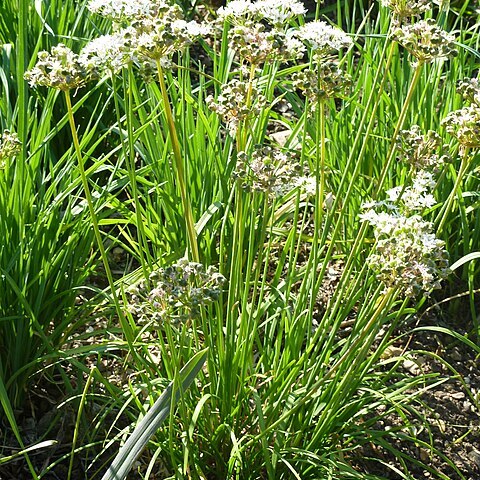An onion family plant. A bulb plant. It grows to 60 cm high. It has a single bulb. The bulbs are 2-3 cm across. The covering is pale brown. It is hard and leathery. The leaves are broad and straight. They are 5-20 mm wide. The scape is 60-100 cm and covered with leaf sheaths for about /12 the length. The flower head is round and has many flowers.

